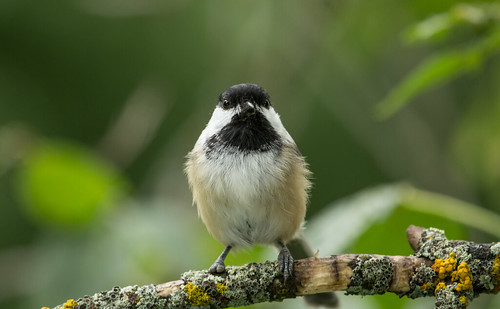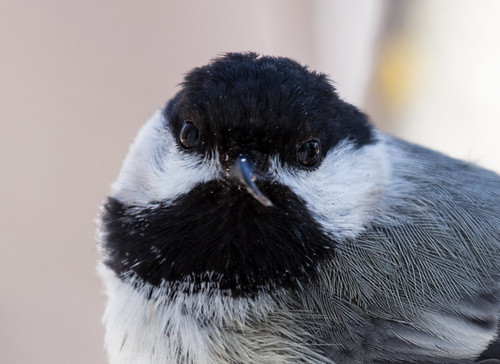This year I gave a talk titled “More than You Thought You
Wanted to Know about Black-capped Chickadees” for the huge northwestern Ohio
birding festival called The Biggest Week in American Birding. I talk about
chickadees a lot, but had never given a major program entirely about them before. I’ve
amassed lots of cool chickadee facts over the years, but wanted to have some
exciting new information as well. In googling to get some interesting
statistics, I came across a fascinating entry in David Sibley’s blog. He’s the
one who wrote and illustrated the wonderfully comprehensive Sibley Guide to Birds—both the huge
field guide and the extraordinarily useful cell phone app that includes all the
information from the field guide and more.
In his blog, David occasionally
posts mystery sounds, and in the blog post I found, he used this sound.
He explained on his blog:
I made this recording when I had
the bird in my hand (after catching it as part of a regular bird-banding
operation) and held a microphone against its back to record the sound. This is
the heartbeat of a Black-capped Chickadee.
I saved the sound into my own computer, and opened it in
Adobe Audition, where I could expand and count each beat on the waveform. David
Sibley’s recording lasted a bit longer than 8 seconds. I counted 74 beats over one
representative 5-second period, and 118 beats over exactly 8 seconds, which both
calculated out to about 888 beats per minute. There were several “double beats”
recorded—I counted each as a single beat, so if they were really separate
beats, the result was closer to a thousand beats per minute. Imagine that!
In 1968, a researcher named Calder found that a Black-capped
Chickadee at rest had a heart rate of about 480 beats per minute, and in 1941,
another researcher, Odum, got 522 beats per minute at rest—he estimated that
it must double during activity. David’s chickadee was under the stress of being
handled, so the 888 beats per minute for that bird is quite consistent with
those earlier results.
It wasn’t until after my program that I got a different kind
of hearty news on the chickadee front. Back in the winter of 2013-2014, I
noticed that one of the chickadees coming to my feeder had an overgrown,
deformed upper bill. The bill tip eventually fell off, but not before the
neighborhood chickadees had paired off for the season, and that one didn’t get
a mate. He not only had a problem with his bill—his three front toes on his
right foot are missing. I fed him mealworms by hand throughout the winter, and
again all this winter when I’ve been in town. Fortunately, my neighbor and
friend, Jeanne Tonkin, has been feeding chickadees mealworms, too, and that
particular chickadee has been coming to her hand as well. She recently noticed
another chickadee begging from him, and on May 20, when he took mealworms from
my hand, I also got to witness him handing them over to a begging female. This
establishes both that he’s definitely a male—they’re the ones that provide food
during courtship and nesting—and that he’s successfully found a mate this year.
It warmed my heart to see this plucky little survivor doing so well.



